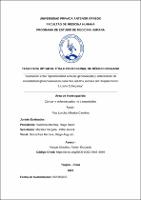Asociación entre hipermovilidad articular generalizada y antecedente de inestabilidad glenohumeral en pacientes adultos jóvenes del Hospital Víctor Lazarte Echegaray
Resumen
Determinar si existe asociación entre la hipermovilidad articular generalizada y el antecedente de inestabilidad glenohumeral.
Materiales y método: Se realizó un estudio observacional, analítico de tipo transversal, que incluyó a 65 pacientes adultos jóvenes que fueron atendidos en los Servicios de Traumatología y Ortopedia, Reumatología, Medicina Física y Rehabilitación del Hospital Víctor Lazarte Echegaray en el periodo 2017 a 2020.
Resultados: La hipermovilidad articular generalizada (HAG) se asoció estadísticamente con el antecedente de inestabilidad glenohumeral (AIG) (p=0,001), 84% de hombres y el 89.5% de mujeres tuvieron HAG con AIG, evidenciándose que el sexo femenino tuvo significancia estadística (p=0,01). La edad promedio fue de 28,9 ± 4,0 para los pacientes que presentaron AIG, la luxación de la articulación glenohumeral (p< 0,001) está asociada a AIG, los demás factores como edad (p=0,703), sexo (p= 0.697) y ocupación (0.075) no mostró significancia estadística.
Conclusiones: Hay asociación entre la hipermovilidad articular generalizada y el antecedente de inestabilidad glenohumeral. To determine if there is an association between generalized joint hypermobility and a history of glenohumeral instability.
Materials and method: An observational and analytical, cross-sectional study was carried out, which included 65 young adult patients who were treated at the Traumatology and Orthopedics, Rheumatology, Physical Medicine and Rehabilitation Service of the Víctor Lazarte Echegaray Hospital in the period 2017 to 2020.
Results: Generalized joint hypermobility (GAH) was statistically associated with a history of glenohumeral instability (GAI) (p=0.001), 84% of men and 89.5% of women had AGH with AIG, evidencing that the female sex had statistical significance (p=0.01). The average age was 28.9 ± 4.0 for the patients who presented AIG, glenohumeral joint dislocation (p< 0.001) is associated with AIG, other factors such as age (p=0.703), sex (p= 0.697) and occupation (0.075) did not show statistical significance.
Conclusions: There is an association between generalized joint hypermobility and a history of glenohumeral instability.
Palabras clave
Colecciones
- Medicina Humana [2969]


